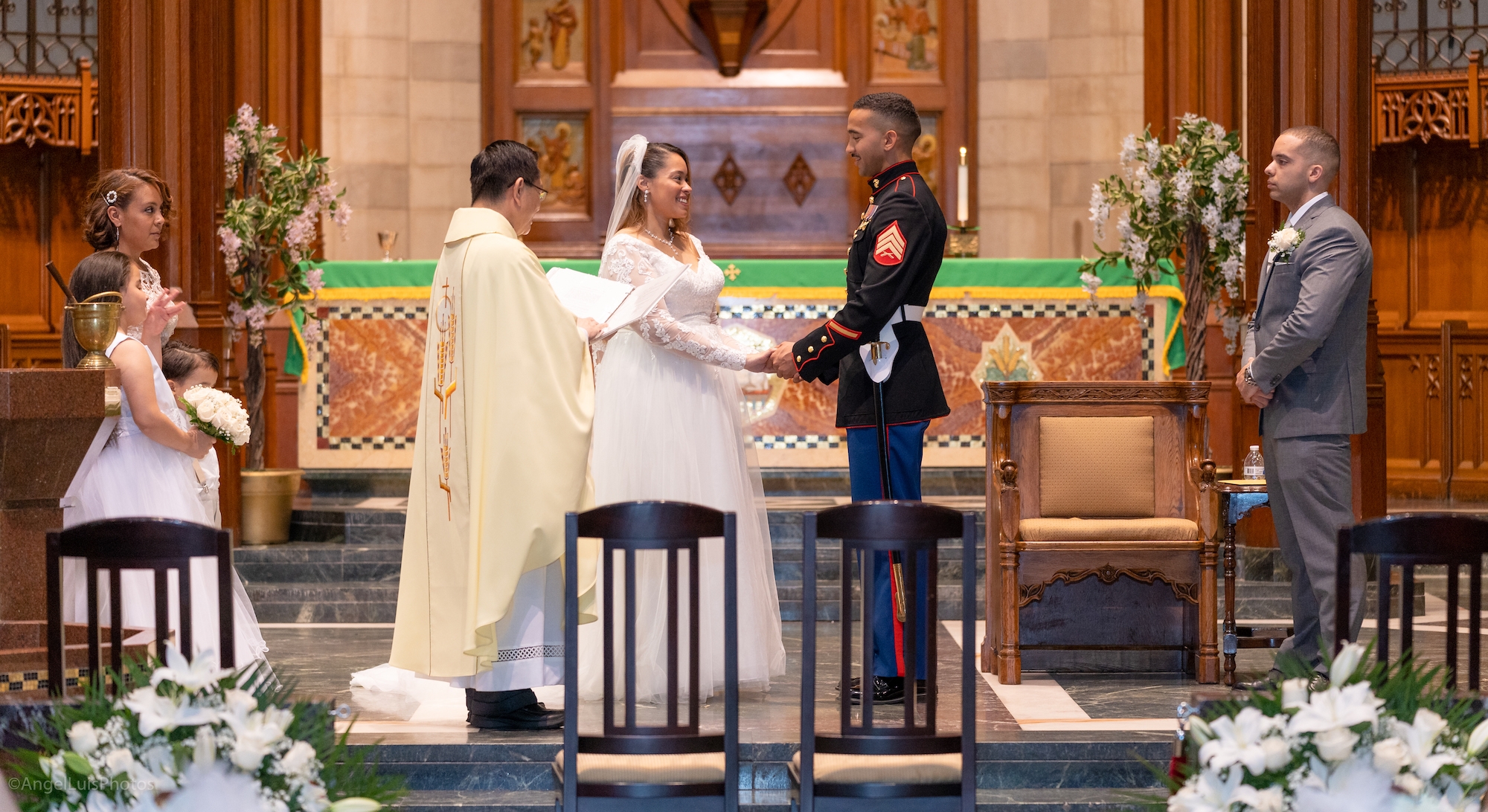
Sacrament of Marriage
Holy Scripture affirms that man and woman were created for one another: “It is not good that the man should be alone.” The woman, “flesh of his flesh,” his equal, his nearest in all things, is given to him by God as a “helpmate”; she thus represents God from whom comes our help. “Therefore a man leaves his father and his mother and cleaves to his wife, and they become one flesh.” The Lord himself shows that this signifies an unbreakable union of their two lives by recalling what the plan of the Creator had been “in the beginning”: “So they are no longer two, but one flesh.” ( Catechism of the Catholic Church 1605)
In the Latin Rite the celebration of marriage between two Catholic faithful normally takes place during Holy Mass, because of the connection of all the sacraments with the Paschal mystery of Christ. In the Eucharist the memorial of the New Covenant is realized, the New Covenant in which Christ has united himself for ever to the Church, his beloved bride for whom he gave himself up. It is therefore fitting that the spouses should seal their consent to give themselves to each other through the offering of their own lives by uniting it to the offering of Christ for his Church made present in the Eucharistic sacrifice, and by receiving the Eucharist so that, communicating in the same Body and the same Blood of Christ, they may form but “one body” in Christ. (CCC 1621)